 This Grave contains all that was Mortal of a YOUNG ENGLISH POET Who on his Death Bed in the Bitterness of his Heart at the Malicious Power of his Enemies Desired these Words to be engraved on his Tomb Stone
This Grave contains all that was Mortal of a YOUNG ENGLISH POET Who on his Death Bed in the Bitterness of his Heart at the Malicious Power of his Enemies Desired these Words to be engraved on his Tomb StoneHere lies One
Whose Name was writ in Water
Feb 24th 1821
It’s hard to argue with an epitaph, but I’m certain “the Malicious Power of his Enemies” had less to do with the death of John Keats at age 25 than the seductive power of a leanan sidhe. Sure, the facts show he was done in by tuberculosis, but I’m fairly certain he could have shrugged it off if he wasn’t busy being devoured by a fairy muse. Fellow poet Percy Bysshe Shelley championed the notion that Keats wasted away as a result of a bad review (hence the inscription on Keats’ grave in Rome), but that was just a way for Shelley to divert attention from the fact that he too was in the grip of a leanan sidhe, one that carried the poet off a month shy of his 20th birthday.
Thomas Chatterton, poet, died age 17. Christopher Marlowe, poet, died age 29. George Gordon Byron, poet, died age 36. Arthur Rimbaud, poet, died age 37. Archibald Lampman, poet (the “Canadian Keats”), died age 37. Robert Burns, poet, died age 37. Forget natural causes, unfortunate accidents, and deliberate self-destruction. Brilliant young dead poets get that way because of the leanan sidhe.
W.B. Yeats—certainly a brilliant poet—lived to the ripe old age of 73, thanks to his intimate knowledge of Irish folklore, which presumably made him immune to the affections of the creature he called Lianhaun shee. Yeats understood this alluring fairy could inspire men to become “great poets or musicians”, but only at a cost, “for the Lianhaun shee lives upon the vitals of its chosen, and they waste and die. She is of the dreadful solitary fairies. To her have belonged the greatest of the Irish poets, from Oisin down to the last century.”
Yeats grouped the leanan sidhe with witches and malevolent spirits, though her attributes in Manx and other Celtic lore emphasized inspiration, passion, and beauty as her key attributes. Her name means “beloved of the fairy mounds”, and any mortal who returned her affection was certain of realizing creative genius in direct proportion to an intense and abridged life span.
While poets will find a relationship with the leanan sidhe both rewarding and fatal, there is evidence to suggest the poet’s vocation inherently is hazardous, even in the absence of a fairy lover. In “The Cost of the Muse: Poets Die Young,” published in the November 2003 edition of Death Studies, James Kaufman of California State University looks back at several centuries of writers from a cross-section of cultures, and establishes that poets, on average, have a shorter life span than other writers. The score card: poets average 62.2 years, playwrights average 63.4 years, novelists average 66 years, and nonfiction writers average 67.9 years. The study supported earlier research on the subject, including Keith Simonton’s 1975 analysis of 420 past and present “major writers”, which determined that writers (non-poets) live an average of six years longer than poets.
At issue in these studies are important concerns about the social, physical, and psychological well-being of writers. Kaufman states: “this study may reinforce the idea of poets being surrounded by an aura of doom, even compared with others who may pick up a pen and paper for other purposes. It is hoped that the data presented here will help poets and mental-health professionals find ways to lessen what appears to be a sometimes negative impact of writing poetry on mortality and mental health."
I would recommend that doctors look for signs of the leanan sidhe when treating poets. Perhaps specialists should have Keats’ “La Belle Dame sans Merci” on hand as a point of reference. Similar themes present in your patient’s writing sample? Diagnosis: leanan sidhe.
La Belle Dame sans Merci. A Ballad
O what can ail thee, knight-at-arms,
Alone and palely loitering?
The sedge has withered from the lake,
And no birds sing.
O what can ail thee, knight-at-arms,
So haggard and woe-begone?
The squirrel's granary is full,
And the harvest’s done.
I see a lily on thy brow,
With anguish moist and fever-dew,
And on thy cheeks a fading rose
Fast withereth too.
I met a lady in the meads,
Full beautiful — a faery's child,
Her hair was long, her foot was light,
And her eyes were wild.
I made a garland for her head,
And bracelets too, and fragrant zone;
She looked at me as she did love,
And made sweet moan.
I sat her on my pacing steed,
And nothing else saw all day long,
For sidelong would she bend, and sing
A faery's song.
She found me roots of relish sweet,
And honey wild, and manna-dew,
And sure in language strange she said —
‘I love thee true’.
She took me to her elfin grot,
And there she wept and sighed full sore,
And there I shut her wild wild eyes
With kisses four.
And there she lullèd me asleep
And there I dreamed — Ah! woe betide! —
The latest dream I ever dreamt
On the cold hill side.
I saw pale kings and princes too,
Pale warriors, death-pale were they all;
They cried — ‘La Belle Dame sans Merci
Thee hath in thrall!’
I saw their starved lips in the gloam,
With horrid warning gapèd wide,
And I awoke and found me here,
On the cold hill’s side.
And this is why I sojourn here
Alone and palely loitering,
Though the sedge has withered from the lake,
And no birds sing.
Sources
“10 Great Writers Who Died Young” The List Universe (accessed 4 March 2009)
http://listverse.com/people/10-great-writers-who-died-young/
“Dead Poets: Poetry Hazardous to Lifespan” Gawker (accessed 4 March 2009)
http://gawker.com/373426/dead-poets-poetry-hazardous-to-lifespan
“Going Early into that Good Night” New York Times (accessed 4 March 2009)
http://query.nytimes.com/gst/fullpage.html?res=9A01E4D7153AF937A15757C0A9629C8B63
“He died from a love of poetry” The Guardian (accessed 4 March 2009)
http://www.guardian.co.uk/education/2008/mar/18/research.highereducation
John Keats. The Complete Poems. Edited by John Barnard. London: Penguin Books, 1982.
“John Keats” Wikipedia (accessed 4 March 2009)
http://en.wikipedia.org/wiki/John_Keats
“Leanan Sidhe” Monstropedia (accessed 4 March 2009)
http://www.monstropedia.org/index.php?title=Leanan_Sidhe
"Leanan Sidhe" Wikipedia (accessed 4 March 2009)
http://en.wikipedia.org/wiki/Leanan_sidhe
Aria Nadii. “Leanan Sidhe, The Dark Muse” (accessed 4 March 2009)
http://www.wildmuse.net/faerie/muses/leanan.html
“Roma/Testaccio - John Keats' grave” Flickr (accessed 4 March 2009)
http://flickr.com/photos/frengo/58969758/
W.B. Yeats and Lady Gregory. A Treasury of Irish Myth, Legend, and Folklore. New York: Avenel Books, 1986.
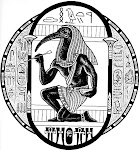
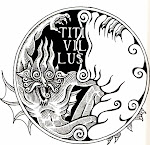
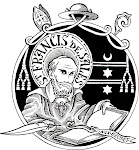
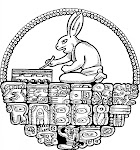
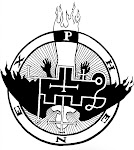
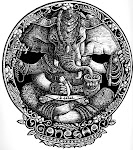


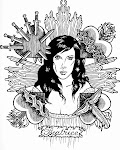
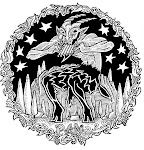
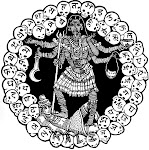
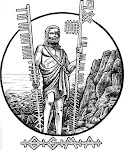
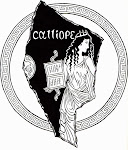
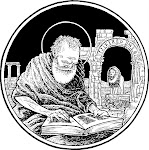
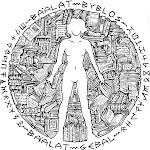



Thank you so much for posting this. This is directly related to my research. I really appreciate your source list as well.
ReplyDelete